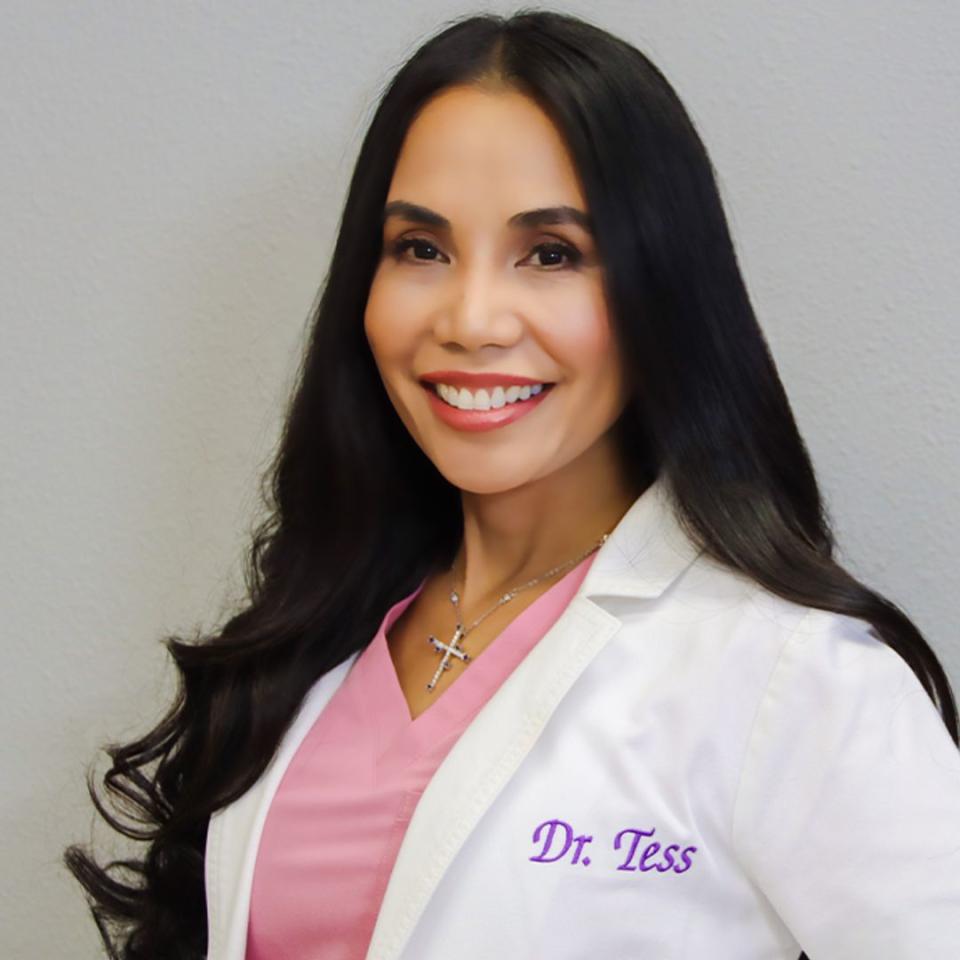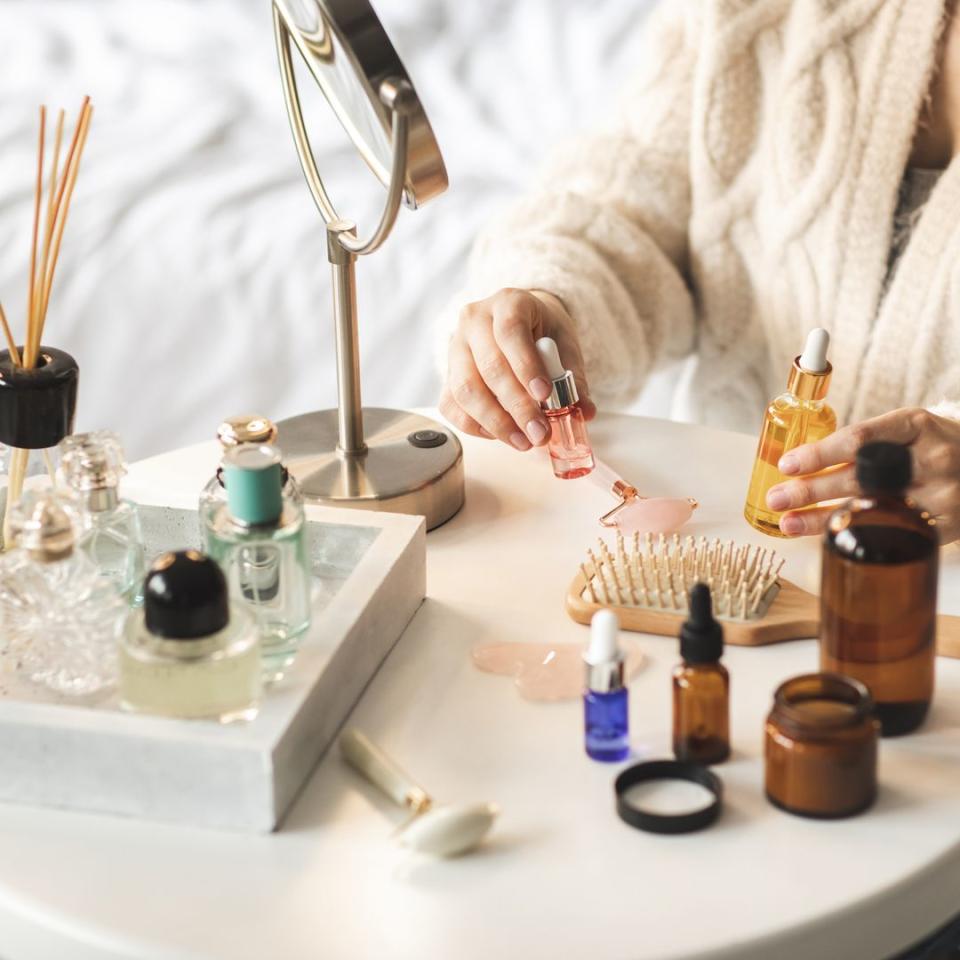I struggle with rosacea - here's how I manage it

Wanting to embrace viral trends like 'glass skin' or 'glazed donut' makeup can be tricky if you have rosacea. I know, I've been there. Going barefaced to the gym or your local supermarket can also feel intimidating when your skin is naturally pink and looks flushed 24/7.
Not many people would say having rosacea is glamorous. But having a few tricks up your sleeve to help you manage your rosy skin and feel your most confident can be a godsend.
What is rosacea?
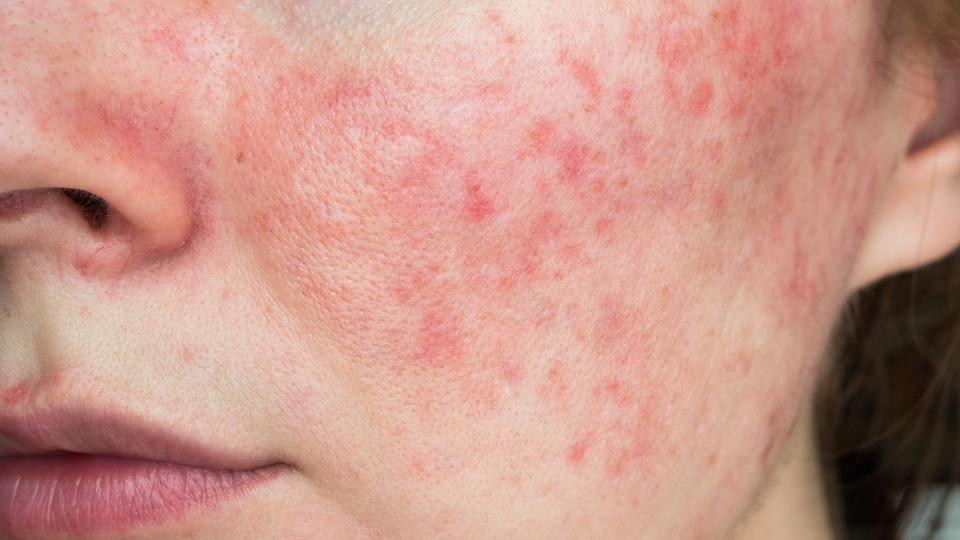
I guess the first, quite important, question to answer is – what is rosacea? Well, it's like acne's lesser-known, equally vexatious sister. It's a skin condition that many people may have and don't even realise, putting down the flushed look to hormones, the menopause, or if when you were in your teens, just an unavoidable rite of passage of adolescence because whose skin doesn't flare up when they're 15?
Medical and cosmetic doctor and founder of Dr Leah Skincare, Dr Leah Totton, tells us: "There are a variety of symptoms that can occur, including visible blood vessels and thread veins, facial redness and flushing which can come and go, bumps which can resemble acne, sensitive skin, thickening of the skin including on the nose which can cause it to appear larger than it originally was.
"Rosacea can be painful for some people, and may result in burning and tingling sensations in the areas which are red," the doctor says.
You may also like
An expert shares 10 menopausal skincare tips to maintain a youthful glow An expert shares 10 menopausal skincare tips to maintain a youthful glow
What's on a beauty editor's bedside table? The supplements, sleep spray and night creams you need What's on a beauty editor's bedside table? The supplements, sleep spray and night creams you need
Rosacea can affect anyone and can't always be put down to those pesky hormones. It's a long-term inflammatory skin condition that can cause your face to appear red, feel hot, or sometimes sensitive to skincare products.
Various factors can cause your redness to flare up from emotional stress and consumption of alcohol to just being genetically predisposed or having an overactive immune system.
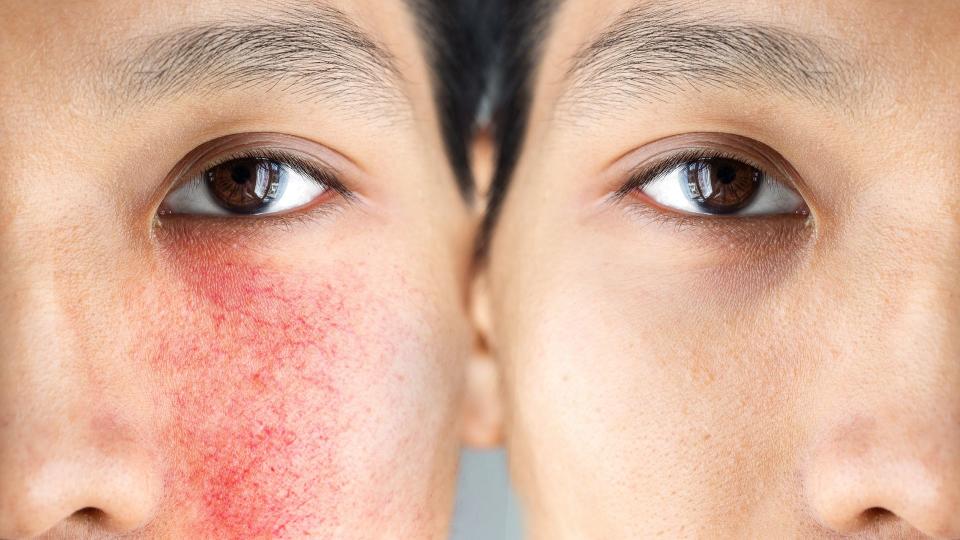
Alright, dermatology lesson over. Feeling like you can embrace your skin is important and valid but also wanting to manage the redness and even cover it to make yourself feel more confident is completely your prerogative. These are the handy tips I've picked up along the way for managing rosacea.
That all-important double cleanse
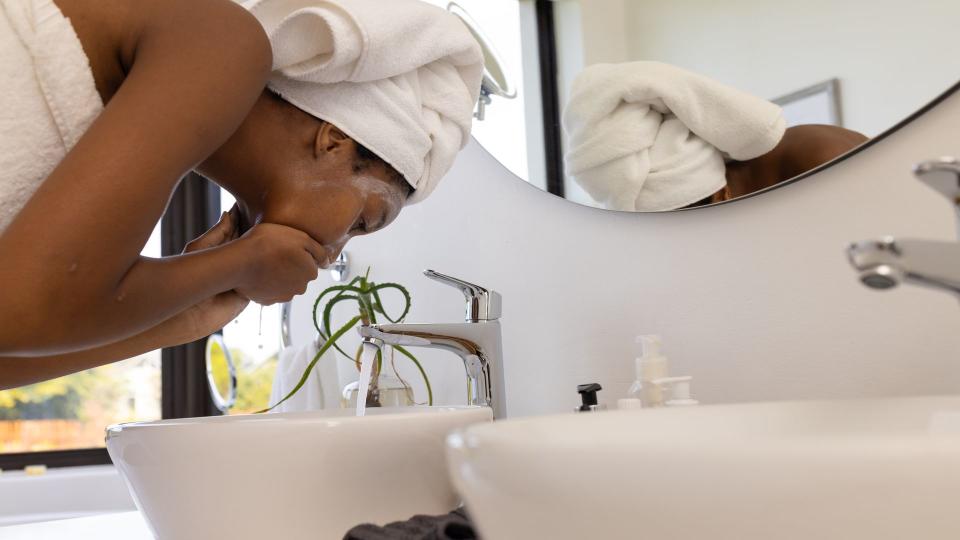
Not only does my skin look naturally flushed, but it's also incredibly oily – jealous? If you're in the same boat keeping your skin clean can sound basic but will ensure that your pores aren't getting clogged with excess oil or makeup which will ensure your skin looks and feels as calm as possible. Double cleansing isn't just a TikTok fad that is in today, out tomorrow. It helps to ensure your skin is properly clean (but not squeaky, we don't want squeaky clean faces – more on that in a minute).
Start by removing makeup with a cleanser, not, I repeat not, a makeup wipe. Something which has an oily or creamy base will gently remove makeup. A product you can use with a hot muslin cloth or microfibre flannel will aid the removal and make you feel as if you're being treated to a spa-worthy facial.
Go in with a second cleanser to ensure your face is completely clean. I love a product that is more gel-like in texture for this step but you do you. Dr Leah says to be wary of this step if you have particularly dry or sensitive skin.
Don't strip your skin of its natural oils
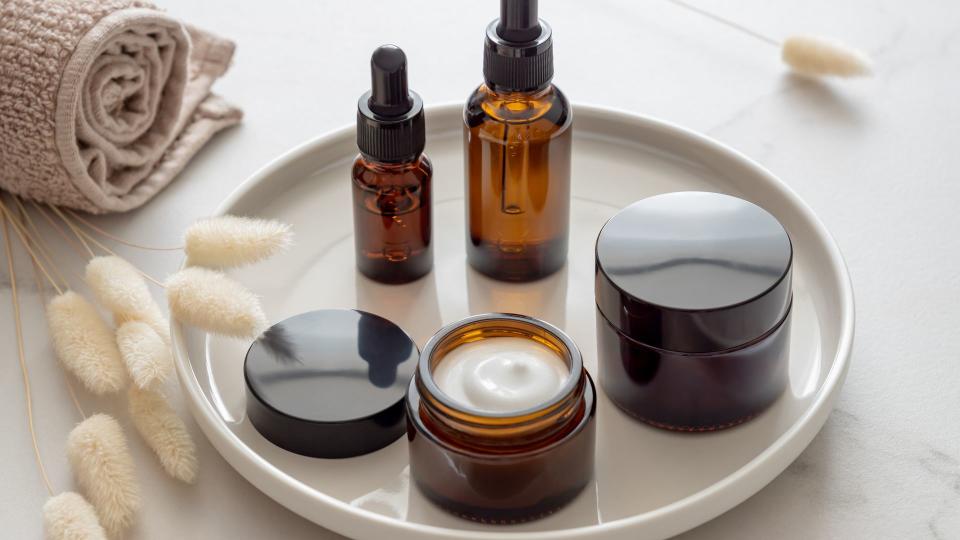
It can be tempting when you have rosacea (and if your skin is naturally oil) to want to scrub it to death in the hopes that the more seemingly clean it is, the less red it will appear. Sadly, in my experience at least, this is not the case. Opting for a harsh scrub and oil-free moisturiser will strip your skin of its natural oils making it feel dry- and potentially sore. Harsh gritty scrubs can also make your face appear inflamed resulting in the exact opposite of what you hoped it would achieve.
Instead opt for a moisturiser that actually caters to your skin type, that promises to hydrate your face (even if you're oily) and if you want to use an exfoliator, go for a liquid product that will help reduce texture without annihilating your skin barrier.
Steer clear of facial icing
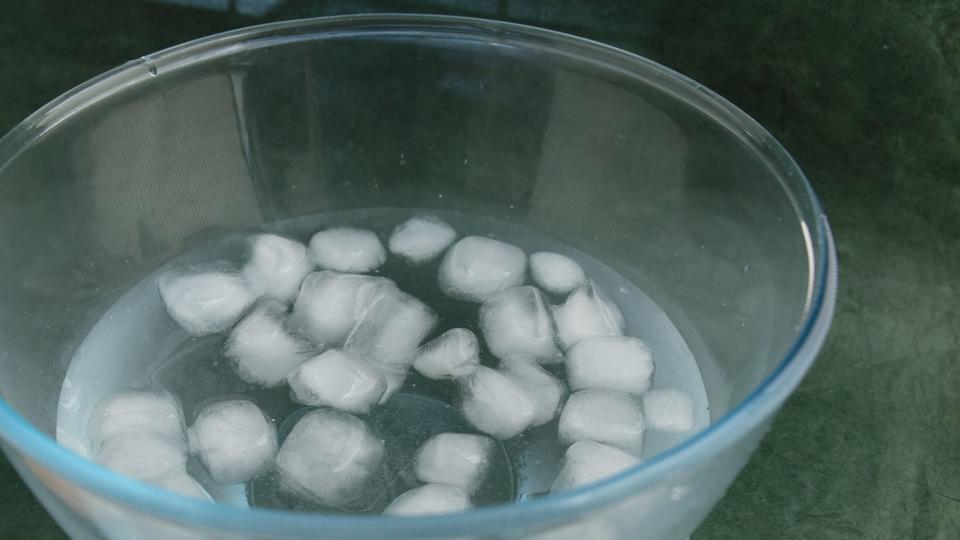
Many of us will have seen the viral face icing practice on TikTok where influencers use ice face rollers to 'calm their face'. Though you may think rubbing ice on your face or dunking your face in a bowl of icy water will help reduce redness or puffiness, it can in fact damage the capillaries in your face which will only further add to the redness.
"I would be cautious of using ice and cold water to treat rosacea, as we know that rosacea can be triggered by dramatic changes in temperature, so this may sensitise the skin further," Dr Leah adds. If you're feeling flushed (rosacea skin can feel physically hot sometimes) opt for a cold flannel at most to help cool you down.
Wear a buildable foundation

Wanting to cover your flushed skin is absolutely valid and you shouldn't feel like you have to bare all if you're not comfortable. I have tried heaps of full-coverage foundations for this very purpose but have actually found that a thinner consistency lasts better throughout the day and pairs nicely with a thicker concealer for any stubborn areas that are resisting cover.
I find a more natural finish is achieved by building up a layer of foundation with a damp beauty sponge (use a dense brush if you really crave a thicker finish) and spot-concealing with a slightly thicker product. Match the foundation to your neck to create an even finish.
Apply a thin layer of loose powder
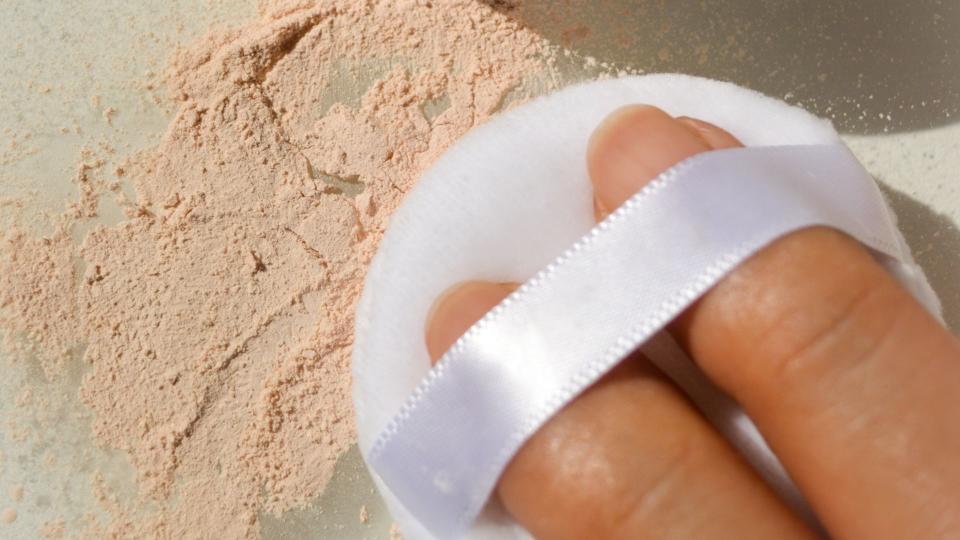
Unless you have naturally really dry skin and wholeheartedly believe powder is the enemy, I always say a thin layer never hurts. If your skin is well moisturised before your base products a thin layer of loose powder shouldn't cling to any dry areas or enlarged pores and will simply lock in that hard work you've done layering that buildable foundation. That way redness is less able to peek through your makeup as it starts to wear throughout the day.
Dr Leah has some additional tips. "Vitamin C serums can be helpful to those suffering from rosacea but it depends on the client's skin, and the serum used in terms of strength and any other ingredients it contains as it can irritate sensitive skin," she says. "This active should be introduced after advice from an experienced cosmetic doctor."
Dr Leah adds that "Vitamin A (retinol) may work to reduce the symptoms of rosacea, due to their ability to strengthen the skin barrier. However, retinoids (vitamin A derivatives) may irritate the skin, so a skin consultation is recommended before opting for this."

Having these tips up my sleeve has really helped me to feel like I can embrace my rosacea. If I want to go bare-faced, I have a skincare routine that will help my skin to feel as calm as possible.
DISCOVER: I tried TikTok's viral Glow Recipe 'Plum Plump' moisturiser – and this is what I really think
Equally, if I want to look in the mirror and not see any rosiness, I know I have my trusty foundation to have my back. Being able to chat to my friends about skin issues we've all experienced also helped me to feel more confident in myself as I doubt you will be the only one in your friendship group who has struggled with their skin at times. Not to mention, those pores or that area of redness are also probably not even as noticeable to those around you as it is to you, so go easy on yourself.


